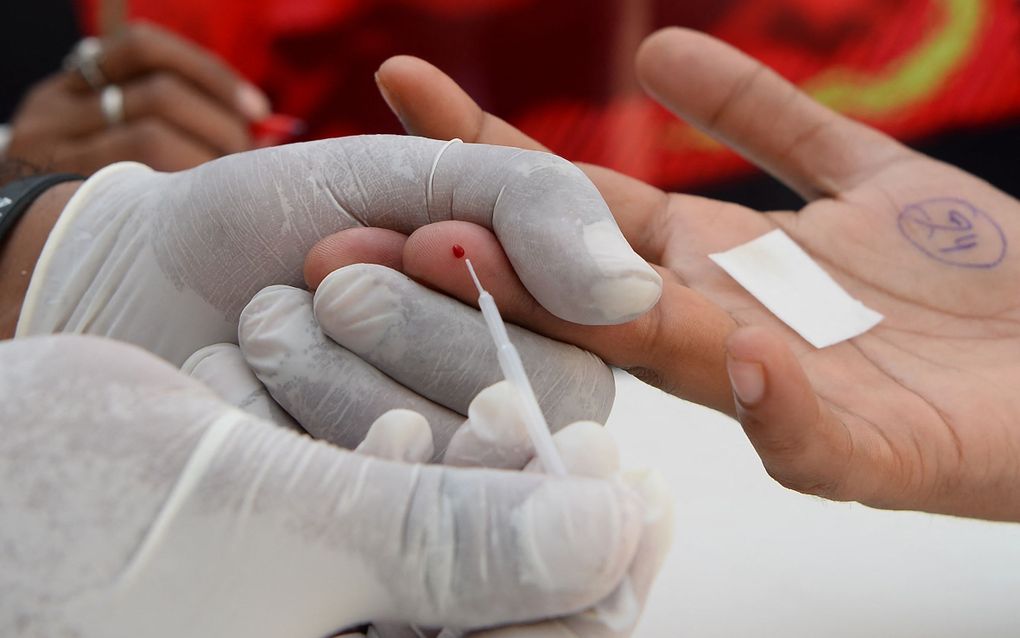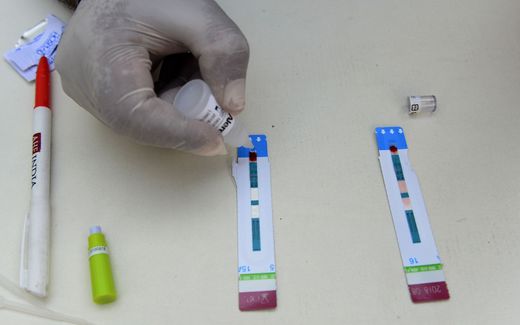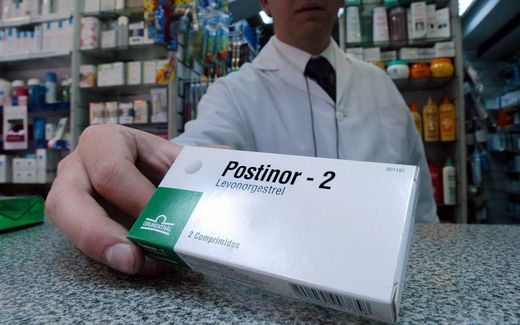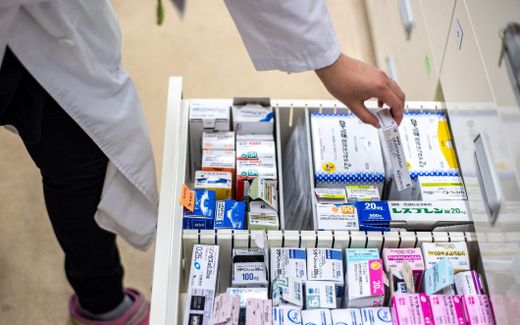Sexually transmitted diseases surge throughout Europe

Taking blood to test on STDs. Photo AFP, Sajjad Hussain
European Union
The EU is currently seeing a spike in its sexually transmitted infection (STI) infection rates.
Syphilis, gonorrhoea, chlamydia, and lymphogranuloma venereum (LGV) have been spreading across the EU, including Western and Central European states such as France, Norway, the Netherlands as well as Switzerland.
According to the European Centre for Disease Prevention and Control (ECDC), the number of cases significantly increased in 2022 compared to the previous year. The number of gonorrhoea cases grew by 48 per cent (compared to a total of 46,728 in 2021), syphilis by 34 per cent (25,270 cases in 2021) and chlamydia by 16 per cent (up from 184,542 in 2021). Lymphogranuloma venereum (LGV) and congenital syphilis also rose compared to previous years.
ECDC Director Andrea Ammon called the rises “disturbing” and said that more action is needed to prevent it from becoming a more significant threat to public health.
“Addressing the substantial increases in STI cases demands urgent attention and concerted efforts. Testing, treatment and prevention lie at the heart of any long-term strategy. We must prioritise sexual health education, expand access to testing and treatment services, and combat the stigma associated with STIs. Education and awareness initiatives are vital in empowering individuals to make informed choices about their sexual health. Promoting consistent condom use and fostering open dialogue about STIs can help reduce transmission rates,” she said in the report.
STDs
If a person is infected with syphilis, typical symptoms include sores on the genitals, mouth, or rectum, according to the Mayo Clinic. Over time, the infection can cause irreversible heart and brain damage. While the bacteria can be treated with antibiotics, early detection is essential.
Chlamydia can come in the form of genital pain and unusual discharge. It mainly affects women, but it can also be seen in men. STIs are not entirely bacterial, but viruses or parasites can also cause them. They are often spread through sexual intercourse or contact with infected bodily fluids. As for prevention, the World Health Organisation recommends condom use, counselling and abstinence as methods to reduce transmission.
While rates continue to climb in the 28 EU member states, France has mainly seen a steep increase in STI infections, according to France 24 Between 2020-2022, syphilis rose to the forefront. With rises of over 110 per cent, men have been the most at risk for infection. Nearly 80 per cent of those cases had a history of multiple partners or STIs, according to a report from France 24. Men over 50 years old proved to be the most affected. Although syphilis saw a sharp increase, chlamydia remains the most common STI in the country at over 16 per cent since 2020. Gonococcal infections such as gonorrhoea also saw a 91 percent increase within the last two years.
According to Pierre Tattevin who is president of the French Infectious Diseases Society (SPILF), the surge of dating apps to connect with multiple sex partners may account for the rise. “It’s become extremely easy to find sexual partners via dating apps. You multiply partners without knowing who they are, what their habits are, or what their [sexual] history is,” he said in the France 24 report.
Pandemic
Despite a slight dip during the Covid pandemic, the increases represent a more complex problem that can be traced before the coronavirus spread worldwide. In another report by the ECDC, at least 46,728 cases of gonorrhoea had been recorded in 2021. Men having sex with other men (MSM) made up half of the cases.
At the same time, the European Gonococcal Antimicrobial Surveillance Programme (Euro-GASP) reported that antibiotic resistance to azithromycin and ciprofloxacin may also be responsible for a spate of cases. The rate of chlamydia had also increased in the same year. Rates were highest among heterosexual young adult women.
At least 77 per cent of syphilis cases can be traced to sex with other men. At least one-third with the disease that engaged in MSM were HIV positive. However, rises in LGV, which is caused by Chlamydia trachomatis, have come mainly from having MSM who were HIV negative, according to the data.
In Norway, chlamydia and gonorrhoea saw sharp rises in 2022. HIV and syphilis also increased from 2021-2022, according to data from the Norwegian Public Institute of Health, which was published in Outbreak News Today. The cases of chlamydia jumped from 23,447 in 2021 to 29,271 in 2022. At least 58 per cent of the cases were women, and 67 per cent were under age 25.
Gonorrhoea experienced an increase in young women. Syphilis cases also rose in 2022 among both heterosexuals and men who have sex with men. At least 85 per cent of those cases were those that engaged in MSM. Men who had sex with men with an HIV-positive or “immigrant background” were also the most vulnerable to syphilis. What’s more, HIV has spread within its refugee and migrant communities. Of the 245 HIV cases reported in 2022, at least 192 (78 per cent) were already infected before arriving in Norway. At least 97 came from Ukraine.
In the Netherlands, STI infections have been on the rise, according to data from the Dutch health agency (RVIM), which was published in Nu.nl. In the first half of 2023, at least 6,637 cases of gonorrhoea were reported. Approximately 38 per cent of those cases occurred among women.
In the south of Europe, Switzerland’s syphilis cases doubled within the last decade, going from 616 in 2013 to 1,056 in 2022. While the disease was nearly eradicated around 20 years ago, it is now making a resurgence in the country. According to the City Hospital in Zurich, there is no explanation for the rise in cases, as reported in Swissinfo. However, they cited a “lack of information” among young adults who have not been exposed to previous HIV prevention campaigns.
Education programs
While the number of STIs sees no evidence of a decline, one method of prevention has been to normalise their existence, according to the Chief Medical Officer in England, Sir Christopher Whitty. The Christian Insitute article also said that Whitty wants to rename prostitution as “sex work” and allow schools to teach safe sex by making sex education programs more “explicit.” That way, there will be less stigmatisation around getting an STI, and more people will be able to get help.
However, the UK-based Christian Institute believes this reasoning is not correct. While the government’s recommendation may embrace harm reduction, it is simply not “following the science,” they said. It also enables people to participate in more harmful acts and shames those who may not agree with that way of thinking. The Institute also noted that Whitty’s proposal leaves out the fact that most STIs result in having several sexual partners or infidelity in an established relationship.
“From a Christian perspective, harm reduction strategies grease the tracks of sin. The Bible clearly teaches that the only context for sexual activity is within lifelong, one-man, one-woman marriage – a far more radical approach to the rising tide of sexual chaos and its associated medical, moral and social consequences. A much better ‘normal’,” the Christian Institute said on their website.
Related Articles







